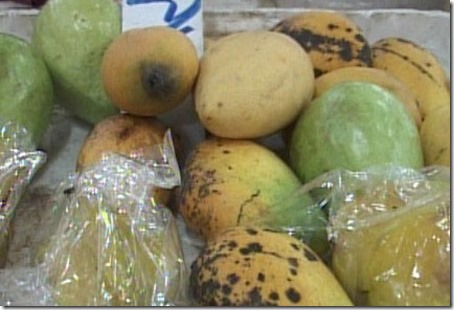一个国际研究组证实了Daniel Janzen理论,研究发现,水果腐烂是微生物与大型动物竞争食物的一个方式。相关文章发表于2014年3月11日的《Proceedings of the Royal Society B》杂志上。
361图书馆–xin_483020722154082827421.jpg
你有没有因为咬到一个烂苹果感到恶心而丢掉?一些科学家认为这是微生物对我们发动防御战争并取得胜利的表现。这个将近40年的想法还没有人验证过,他们认为细菌和真菌为了保持大型动物,像人类一样浪费食物。现在,一项新的研究利用数字模型,证明了旧的假说是正确的。
密歇根大学安娜堡分校的生态学家Daniel Janzen在1997的一篇文章首次提出这个想法,他的灵感来自于用95美分买来的烂鳄梨。他认为,微生物在狼吞虎咽时并不是故意糟蹋食物,它们已经尽可能快地进化出能够产生不良味道的化合物引起大型动物的不良食欲,从而保持它们的食物。Janzen还写到“水果腐烂,种子发霉及肉类发臭,这都是因为微生物与其他大型生物体竞争的方式。”
一些研究人员竭尽全力去证明这个想法在自然界是否实现?在佐治亚州海岸开展的一项实验中,美国科学家引诱螃蟹到一个陷阱里面,那里有着新鲜或恶臭的鱼肉。研究发现,新鲜的腐肉吸引了近三倍的动物,这显示了“细菌通过渲染令人反味的尸体臭味与大型动物竞争食物”,其他实验表明,鸟类更喜欢新鲜的水果。
在2006年,有四位科学家试图利用Janzen 理论建立一个数学模型,但是他们失败了。他们发现,微生物如果需要花更多的时间来消耗大型动物肉类食物,它们就不能够被打扰。他们认为,Janzen 理论虽然听起来似是而非,但不太可能是真实的。在他们看来,一个令人作呕的烂苹果,更可能是微生物为了制造故障而产生的副产品。
现在,建立早期模型的研究人员又重新探讨这个话题,但他们改变了一个关键的假设:“在我们原来的模式中,几乎任何微生物可以到达的任何地方,”论文作者之一,英国利物浦约翰摩尔斯大学的生态学家David Wilkinson说。这意味着,任何腐烂的水果很可能会受到各种微生物的定植。在这种情况下,微生物之间会为了食物而相互排挤。来自于英国皇家学会学报B的一项研究报道,“在新的模型中,它们并不能够轻易移动,这是个非常重要的生物学差异。”
原文摘要:
Why fruit rots: theoretical support for Janzen’s theory of microbe–macrobe competition
Graeme D. Ruxton, David M. Wilkinson, H. Martin Schaefer andThomas N. Sherratt
We present a formal model of Janzen’s influential theory that competition for resources between microbes and vertebrates causes microbes to be selected to make these resources unpalatable to vertebrates. That is, fruit rots, seeds mould and meat spoils, in part, because microbes gain a selective advantage if they can alter the properties of these resources to avoid losing the resources to vertebrate consumers. A previous model had failed to find circumstances in which such a costly spoilage trait could flourish; here, we present a simple analytic model of a GENEral situation where costly microbial spoilage is selected and persists. We argue that the key difference between the two models lies in their treatments of microbial dispersal. If microbial dispersal is sufficiently spatially constrained that different resource items can have differing microbial communities, then spoilage will be selected; however, if microbial dispersal has a strong homogenizing effect on the microbial community then spoilage will not be selected. We suspect that both regimes will exist in the natural world, and suggest how future empirical studies could explore the influence of microbial dispersal on spoilage.

评论(0)